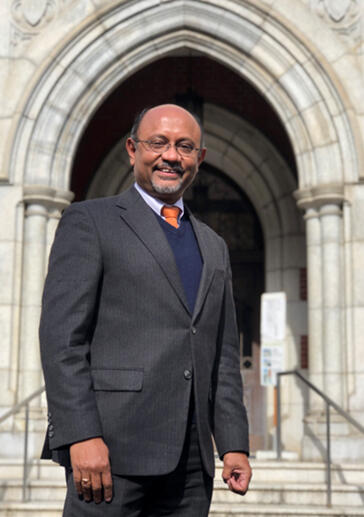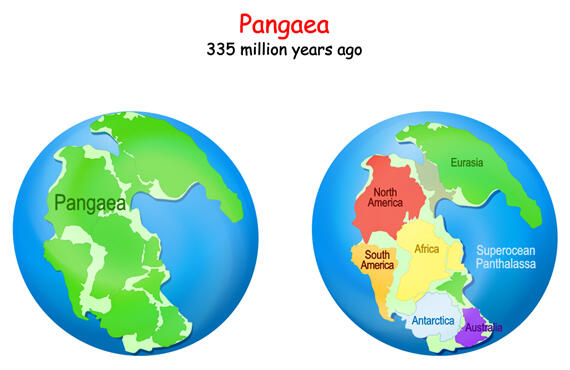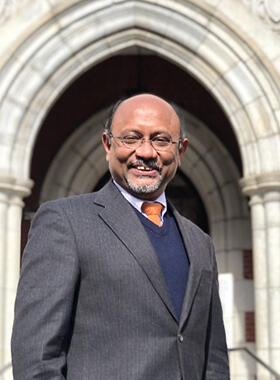From the recent devastating earthquake in Türkiye and Syria, to heavy flooding in Australia and New Zealand, and the ever-looming shadow of typhoons in the Asia and Pacific regions, the risk of disasters, and the responses to them are of huge global importance. One researcher taking on the challenge of risk reduction, environmental and climate-related research, and the related outreach is Prof. Rajib Shaw of the Graduate School of Media and Governance, at Keio University, Japan. Prof. Shaw is a Japanese national of Indian descent who is working hard towards improving community resilience, disaster risk management, and climate and environmental innovation, and Science Japan took some of his time to hear more about the many different areas he is involved in.

Chasing an Antarctic dream leads to the high-tech labs of Japan
Prof. Shaw was born and raised in India. He was inspired by an Indian national who was working in Antarctica and published many locally famous stories of her adventures there. "You know, I had a big dream to go to Antarctica! That's where it started" he said, recalling his time as a student. "There was an Indian lady who was from my city, she was a geologist and went to Antarctica, and she was writing lots of popular stories in a very popular local language journal about the rocks there, about its geology. I was a big fan of hers! I wanted to somehow go to Antarctica."
He was, unfortunately, unable to make the journey there himself, but his dream led to working on rock samples related to the frozen continent. His initial research, almost 30 years ago, was on the great supercontinent that existed long ago, Gondwana, and he did several analyses on the rocks collected there. "My research was on Gondwana. I was looking at the South Indian rock samples and trying to analyze the timing of when [India] actually departed from Antarctica and Australia. So, in the end, my dream was half fulfilled!" Prof. Shaw said with a smile.
It turned out that Prof. Shaw's Indian supervisor at the time had previously worked with a Japanese researcher at the University of Toronto, in Canada. Prof. Shaw then took part in various field work sessions with his supervisor's colleague, which eventually led to an invitation to take part in further detailed analyses in Japan. "That was almost 30 years ago now, and India's science and technology innovation level was not that high, our universities didn't have the required high precision analytical equipment that Japan had." Prof. Shaw continued, "At that time there was an analysis I wanted to do, and there were only three pieces of equipment globally. One was in Japan in the National Institute of Polar Research, another one in Australia and another one in Chicago." His professor's colleague suggested the MEXT Scholarship program, and Prof. Shaw took the chance to apply.
"We used to exchange documents by airmail. I still remember vividly the time that I finally learned I had been accepted and it was like a dream come true." Prof. Shaw recalled fondly. "I was then asked when I would be able to come, and I landed in Japan in February 1994 with 200kg of rocks for my analysis!" His journey as a researcher in Japan had begun.

A desire to work with people and really make a difference
Roughly a year after Prof. Shaw arrived in Japan, a disaster struck near the city of Kobe. This was the "Great Hanshin Awaji Earthquake" of January 1995, the deadliest Japanese earthquake in almost a century. At the time, he would often carry out overnight analyses and sleep in the lab, and on the morning of the disaster he remembers waking up to a TV broadcast covering the event. "I didn't speak a lot of Japanese, and I just saw this huge fire. There was helicopter and some city somewhere was on fire. This was the Nagata fire and was my first image of the disaster." In response to this, Prof. Shaw and several his friends decided to make the trip to Kobe to volunteer to help.
One often overlooked aspect of volunteering is just how much preparation is required before heading to the location. Prof. Shaw recalled, "There were many people who came to Kobe just out of passion, just seeing that visual in the media, many people just wanted to help. We do a lot of analyses on management now, but at that time I had no idea that I needed to be more prepared to go to a disaster site. I just wanted to help and so off I went. We later found that this was not a good decision as it creates a lot of pressure on already limited resources."
This led to an unforgettable experience for Prof. Shaw, one that he still remembers well, "I still remember one lady in one of the evacuation centers, she gave me a rice ball. 'I survived, this is no problem, you are very young and came all the way from Yokohama, please eat it' she said. I was so hesitant, and my friend translated for me. You can imagine, this lady has lost her house, maybe she had lost some of her family members, but in spite of all of those hardships, she was sharing her limited food."
According to Prof. Shaw, Japan's strengths when it comes to disaster resilience and response is not necessarily the high technology level they possess, but it's people. The lady he met in Kobe serves as a great example of this, and the experience was a great motivator to learn more about disaster risk management.
Commenting after gaining more perspective through his career, he added "It is not that the people did not know how to retrofit buildings, it was more socio-economic issues. The people who lived in those buildings were mostly as aged population. They knew the risk of the building but possibly did not have enough funding to retrofit it." Several important lessons were learned due to the event, and his personal experience volunteering shaped his future career as a researcher. "That was my main motivation. I didn't know that it would be in disasters, but I wanted to do something that would involve people, and that is how I entered the disaster reduction field."

Profile
RAJIB Shaw
A Japanese national of Indian origin, completed his undergraduate studies in India. After receiving the MEXT scholarship and completing his studies in Japan, he moved into a consulting role where he was heavily involved with Japan's overseas disaster operations. He then took up a position in Kyoto University, Japan and has been in his current role as a professor at Keio University since 2017.
A list of Prof. Shaw's research results can be found at the following link: https://rajibshaw.org/research/publications/
Prof. Rajib Shaw: https://rajibshaw.org/profile/
Produced by the Science Japan Editorial Team



